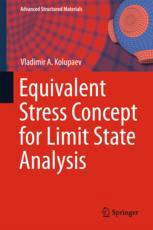

Most ebook files are in PDF format, so you can easily read them using various software such as Foxit Reader or directly on the Google Chrome browser.
Some ebook files are released by publishers in other formats such as .awz, .mobi, .epub, .fb2, etc. You may need to install specific software to read these formats on mobile/PC, such as Calibre.
Please read the tutorial at this link: https://ebookbell.com/faq
We offer FREE conversion to the popular formats you request; however, this may take some time. Therefore, right after payment, please email us, and we will try to provide the service as quickly as possible.
For some exceptional file formats or broken links (if any), please refrain from opening any disputes. Instead, email us first, and we will try to assist within a maximum of 6 hours.
EbookBell Team

4.7
96 reviewsThis book discusses arbitrary multiaxial stress states using the concept of equivalent stress. It highlights the most useful criteria, which can be applied to various classes of isotropic materials. Due to its simplicity and clarity, this concept is now widely used in component design, and many strength and yield criteria based on the equivalent stress concept have been formulated. Choosing the appropriate criterion for a given material remains the main challenge in applications.
The most useful criteria can be applied best when the plausibility assumptions are known. Accordingly, the book introduces fitting methods based on mathematical, physical, and geometrical objective functions. It also features a wealth of examples that demonstrate the application of different approaches in modeling certain limit behaviors.